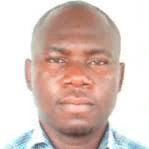International Journal of Image, Graphics and Signal Processing (IJIGSP)
IJIGSP Vol. 13, No. 3, 8 Jun. 2021
Cover page and Table of Contents: PDF (size: 622KB)
A Digital Image Watermarking Using Dwt and L-shaped Tromino Fractal Encryption
Full Text (PDF, 622KB), PP.33-43
Views: 0 Downloads: 0
Author(s)
Index Terms
Watermarking, digital wavelet transforms, fractal, encryption, frequency domain
Abstract
This paper presents a digital image watermarking scheme in the frequency domain for colour images. The algorithm was developed using the digital wavelet transform together with fractal encryption. A host image was first transformed into a frequency domain using the discrete wavelet transform after which a binary watermark was permuted and encrypted with a fractal generated from the watermark and a random key. The encrypted watermark is then embedded into the host image in the frequency domain to form a watermarked image. The algorithm’s performance was examined based on the image quality of the watermarked image using peak signal to noise ratio. A perceptual metrics called the structural similarity index metric was further used to examine the structural similarity of the watermarked image and the extracted watermark. Again, the normalised cross-correlation was introduced to further assess the robustness of the algorithm. Our algorithm produced a peak signal to noise ratio of 51.1382dB and a structural similarity index of 0.9999 when tested on colour images of Lena, baboon and pepper indicating the quality of the watermarked images produced and hence indicates a higher imperceptibility of the proposed algorithm. The extracted watermark also had a structural similarity of 1 and a normalised cross correlation of 1 indicating a perfect similarity between the original watermark and the extracted watermark hence shows a higher performance of the proposed algorithm. The algorithm also showed a very good level of robustness when various attacks such as Gaussian noise, Poisson noise, salt and pepper noise, speckle noise and filtering were applied.
Cite This Paper
Nicodemus Songose Awarayi, Obed Appiah, Benjamin Asubam Weyori, Christopher Bombie Ninfaakang, " A Digital Image Watermarking Using Dwt and L-shaped Tromino Fractal Encryption", International Journal of Image, Graphics and Signal Processing(IJIGSP), Vol.13, No.3, pp. 33-43, 2021. DOI: 10.5815/ijigsp.2021.03.03
Reference
[1]Islam, Saiful Md , and Pil Ui Chong. "A Digital Image Watermarking Algorithm Based on DWT." International Journal of Computer and Communication Engineering 3, no. 5 (2014): 356-360.
[2]Jose, M. D., Karuppathal, R., & Kumar, A. V. Copyright Protection using Digital Watermarking. National Conference on Advances in Computer Science and Application (2012). (pp. 24-27).
[3]Kashyap, Nikita , and R G SINHA. "Image Watermarking Using 3-Level Discrete." I.J.Modern Education and Computer Science 3 (2012): 50-56.
[4]Gunjal, L Baisa , and R R Manthalkar. "AN OVERVIEW OF TRANSFORM DOMAIN ROBUST DIGITAL IMAGE WATERMARKING ALGORITHMS." Journal of Emerging Trends in Computing and Information Sciences 2, no. 1 (2011): 37.
[5]Kalra, Singh Gursharanjeet , Rajneesh Talwar, and Harsh Sadawarti. "Robust Blind Digital Image Watermarking Using DWT and Dual Encryption Technique." 2011
[6]Jahan, Roshan . "Efficient and Secure Digital Image Watermarking Scheme using DWT-SVD and Optimized Genetic Algorithm based Chaotic Encryption." International Journal of Science, Engineering and Technology Research (IJSETR) 2, no. 10 (2013): 1943-1946.
[7]Chittaranjan , Pradhana, Rathb Shibani, and Kumar Ajay. "Non Blind Digital Watermarking Technique Using DWT and Cross Chaos." 2nd International Conference on Communication, Computing & Security [ICCCS-2012]. Elsevier, (2012).
[8]Sudha, M S, and T C Thanuja. "A Robust Image Watermarking Technique using DTCWT and PCA." International Journal of Applied Engineering Research 12, no. 19 (2017): 8252-8256.
[9]Gupta, Preeti . "Cryptography based digital image watermarking algorithm to increase security of watermark data." International Journal of Scientific & Engineering Research 3, no. 9 (2012): 1-4.
[10]Venugopal, Tipirneni , and Kumar Vusthikayala Siva Reddy. "Image Watermarking Using Two Level Encryption Method Based on Chaotic Logistic Mapping and Rivest Shamir Adleman Algorithm." International Journal of Intelligent Engineering and Systems 11, no. 6 (2018): 271.
[11]Parmar, Prena, and Neeru Jindal. "Image Security with Integrated Watermarking and Encryption." IOSR Journal of Electronics and Communication Engineering (IOSR-JECE) 9, no. 3 (2014): 24-29.
[12]Pooja, M Prakash, R Sreeraj, Fepslin AthishMon, and K Suthendran. "Combined Cryptography And Digital watermarking For Secure Transmission of Medical Images in EHR Systems." International Journal of Pure and Applied Mathematics 118, no. 8 (2018): 265-269.
[13]Solanki, Neha , Sanjay Kumar Malik, and Sonam Chhikara. "RONI Medical Image Watermarking using DWT and RSA." International Journal of Computer Applications 96, no. 9 (2014): 30-35.
[14]Lu, Jian, et al. "A Robust Fractal Color Image Watermarking Algorithm." Mathematical Problems in Engineering (2014): 1-12.
[15]Liu, Feng, Long-Hua Ma and Cong Liu. "Optimal blind watermarking for color images based on the U matrix of quaternion singular value decomposition." Springer (2018): 1-18.
[16]KAMBLE, ASHISH and SUSHAMA S AGRAWAL. "Wavelet Based Digital Image Watermarking Algorithm Using Fractal Images." Proceedings of the Third International Conference on Electronics Communication and Aerospace Technology [ICECA 2019]. IEEE Xplore, 2019. 1220-1224.
[17]Darwish, Saad M and Layth Dhafer Shukur Al-Khafaji. "Dual Watermarking for Color Images: A New Image Copyright Protection Model based on the Fusion of Successive and Segmented Watermarking." Springer (2019): 1-28.
[18]Swati , Gupta , and Bansal Nishu . “Image Encryption Techniques using Fractal Geometry: A Comparative Study.” IOSR Journal of Computer Engineering (IOSR-JCE) 16, no. 5 (2014): 31-35.



